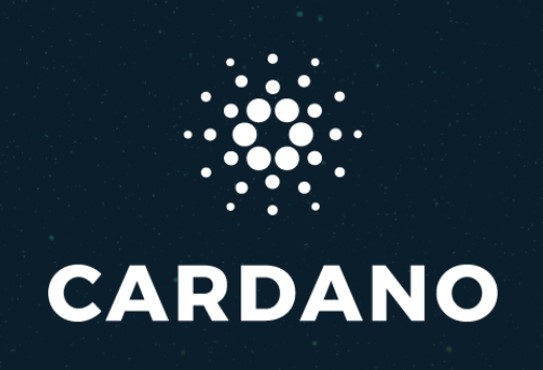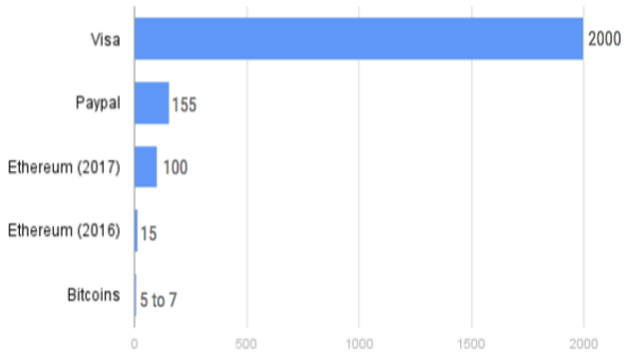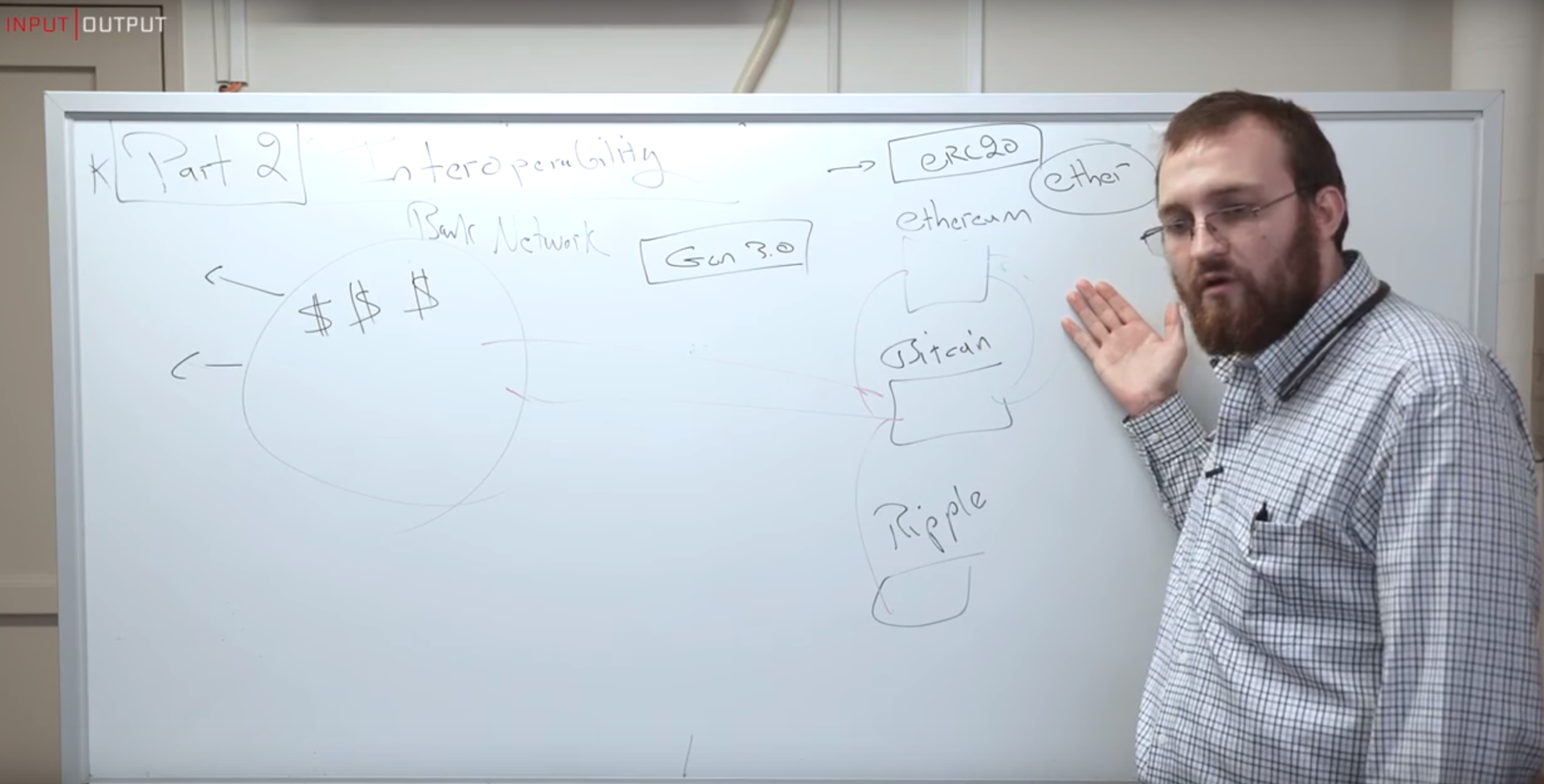
There are more than 2,000 cryptocurrencies on the market today, and as everyone should know, 90% of these coins are nothing more than copies of Bitcoin or even “fake coins”. Over time, cryptocurrencies that do not add value tend to perish. But this definitely does not seem to be the fate of Cardano.
Briefly speaking, Cardano is the third generation of open source cryptocurrencies. Bitcoin marked the first generation, Ethereum marked the second, and Cardano will be the third generation. Each generation has specific characteristics and functionalities. The Cardano project (through the ADA currency) intends to unite the best features and functionalities of all the more than 2,000 cryptocurrencies that have already been created, solving problems and offering new solutions for the crypto world.
Cardano development is based on scientific methodology (the first in the crypto world to use this concept), and counts on an incredibly strong team of researchers, scientists, engineers, developers, in addition to great names already known in this market, such as Charles Hoskinson, co-inventor and former president of Ethereum (ETH).
The project as a whole is quite ambitious and revolutionary, but you will understand how all this is possible to be achieved by reading this article. We will explain each feature of the currency in detail.
Cardano as currency: ADA
One of Cardano’s objectives is to be used as a digital currency, similarly to Bitcoin (which represents the first generation of cryptocurrencies), using a blockchain system. One of the company’s philosophies is to be an alternative mean of payment for billions of people who live in countries that do not have access to banks. To be useful in this aspect, an important characteristic is the speed in the transactions.
Bitcoin, for example, processes about 7 transactions per second (TPS). This is slow when compared to the actual amount of transactions operated by globally recognized systems such as Paypal and credit cards. Compare below the number of transactions per second between different means of payment:

Cardano’s statements regarding the speed of transactions suggest that they are prepared to have the speed necessary to scale globally. Reading this discussion, for example, we can see Charles Hoskinson (using the nickname ethereumcharles) explaining that it is necessary not only to have a high speed in transactions, but also to be ready to scale, that is, to allow a rapid growth in demand without compromising the network.
In other words, putting in a marketing campaign that the project has 1000 TPS means nothing if this value can go down depending on the number of users and demand. A project must have a speed compatible with the demand. If the demand requires 50 TPS, the project must be able to deliver 50 TPS. If the demand grows 10 times, the project needs to be able to deliver 500 TPS. Cardano’s goal is exactly this: to scale the system according to the demand. As all this involves different factors, the Cardano team approaches the issue with different solutions and technologies, such as Praos and RINA.
Scalability is one of the main prerequisites for a cryptocurrency, and Bitcoin, for example, is already facing problems in relation to this, because the growth in demand has congested the network and increased the price of the transactions fees (causing a drop in prices at the end of 2017). Some solutions are already being proposed by the Bitcoin community, such as the implementation of the Lightning Network. However, these implementations take time to become secure and to be adopted completely by the network. One of Bitcoin’s problems is to “adjust” along the way (when a problem arises, the community tries to solve it by making changes to the system; this is not always positive, because it can end up creating a “Frankenstein”).
Cardano is being developed from the beginning to not face these problems, being designed with eyes on the future, containing complex technical solutions to major problems, so that the currency can achieve an unprecedented scalability.
Charles Hoskinson has already made some statements recently stating that by the end of 2019, Cardano will be able to process about 100-200 TPS (which is already great for high demand). When the project enters the Basho phase in 2020, the solutions will be implemented to enable the project to achieve its ultimate goal of scaling as needed.
Modularity
Future changes in the architecture can’t be traumatic as occurs with other projects. Cardano is building a modular project, this means that the protocol is easily adaptable to updates in the code. The secret is to build layers that divide the architectures into different parts, so that the full set of features of the project is not a spider web (where a change in one part would affect other parts in an unpredictable way). On the contrary, the architecture allows easy replacement and maintenance for future upgrades.
The team responsible for these blockchain implementations within Cardano is the IOHK company, which has been cited several times by Forbes as disruptive in research and development in the industry, specializing in building blockchain systems for academic institutions, governments and corporations.
Cardano Proof of Stake (PoS)
Bitcoin works with Proof of Work (PoW) to validate transactions. This technology requires a lot of computational effort and energy waste. This system has been greatly questioned by the great waste of energy to ensure that network validations are secure. An alternative that some cryptocurrencies use is the Proof of Stake (PoS), which does not depend on computational effort or energy expenditure, being much more efficient and economical.
However, PoW is much safer, and there have always been fears about PoS. Therefore, some cryptocurrencies mix the two systems, trying to take advantage of both.
The Cardano team, however, worked hard to create and develop the first 100% safe PoS system, submitting the solution for academic review in several universities and obtaining scientific approval for such. In other words, this represents a revolution, since it means that it will be possible to validate blockchain network transactions with much more efficiency, economy and speed. The protocol used for such a solution is called Ouroboros. If you are an expert and are interested in reading the solution in detail, check out the official paper.
Staking – earning money by holding Cardano
Projects that have a PoS protocol reward users who maintain a large amount of currencies and who run a full node of the network. This compensation consists of receiving more coins, something like Bitcoin’s mining reward. In Ethereum, for example, it is necessary to have at least 32 ETH (equivalent to about 5000 dollars – at the rate of $155/ETH) to receive the staking rewards.
Cardano will revolutionize the concept of staking by allowing anyone, with any amount of ADAs, to stake and be eligible to receive rewards. It will be possible to choose a staking pool and delegate your ADAs to the pool administrator so that they are useful for achieving consensus and network security.
Since everyone can participate, this will encourage ADAs holders not to sell their currencies to receive the rewards, which can have an upward effect on prices.
Cardano Smart Contracts

The Ethereum project (ETH) revolutionized the cryptocurrency market by offering the possibility of programming and building smart contracts on top of its platform. This allowed developers to program and create their own systems and solutions using the Ethereum network, including creating other currencies within the system, the so-called tokens. Today there are thousands of tokens built under the Ethereum system, representing strong projects such as OmizeGO, Golem, among others.
It was really a revolution for the crypto market, marking the second generation of cryptocurrencies. Cardano will also have this possibility of creating smart contracts in its system, and will offer numerous improvements over the Ethereum network and other similar systems.
One of the main requirements will be related to security. There are many rumors about possible security loopholes in smart contract systems, and the Cardano team is working hard to create the world’s most secure decentralized applications (dApps) system, validated by leading cryptographic experts.
Several enhancements are planned for this system, allowing for more efficient and user-friendly programming for developers. Unlike Ethereum, which uses its own programming language for development on its platform (called Solidity), Cardano will make it possible to create smart contracts and dApps with the most famous programming languages on the market, such as Phython, Javascript, C, Java, and so on. This will allow developers to use all their expertise to create applications on the Cardano platform, without having to learn a new language.
Ethereum – Cardano Migration
Projects that were already built on Ethereum before the launch of Cardano’s smart contract functionality can be quickly migrated to Cardano via the KEVM virtual machine. This protocol was created with this exact purpose in mind: to allow Ethereum projects to change platform without having to rewrite all their code from scratch.
This possibility of rapid migration is very inviting, because it allows projects already established in the market to enjoy more functionality, security, speed, without having to adapt their code to another platform. This can even create a mass evacuation from Ethereum to Cardano.
For the use of extra features such as libraries, friendly interfaces, use of any programming language, among other features of Cardano, there is another environment for this “advanced module” of smart contracts called IELE. Thus, KEVM and IELE are virtual machines with different strategies and objectives for projects within the Cardano ecosystem.
Formal verification

One of Cardano’s greatest innovations is the possibility of allowing formal verification of software. Formal verification is a thorough review of the code created to ensure that there is no critical system failure. Currently, only companies that work with very critical projects such as aviation systems have formal verification as this type of approach is very expensive. Because airplanes carry hundreds of passengers, the system cannot fail, so this investment is necessary.
However, a financial system that moves billions of dollars also needs formal verification, because it is not acceptable that security breaches or bugs result in million-dollar losses.
Therefore, Runtime Verification is working on the creation of a formal verification protocol within Cardano. Runtime Verification leads the world’s research in this field, with clients such as NASA, Boeing, Toyota, National Science Foundation, among others. Runtime Verification’s goal is to create a faster and more efficient automated formal verification system.
PhD Grigore Roșu, CEO of the company, leads Cardano’s smart contract development business, bringing this concept to the blockchain. It will be a product never before seen by the market, allowing small projects to have access to a resource previously restricted only to large corporations.
Adoption
The team in charge to promote the construction of decentralized applications on Cardano is Emurgo, which has research and development centers in Japan, Philippines and South Korea. In the first phase of building the community, Emurgo will focus on establishing infrastructure so that it can later deploy funds for strategic projects and application developers.
Companies can get assistance from specialized enterprises in Emurgo community (there are several sectors: Emurgo Finance, Emurgo Legal and Emurgo Logistics), which will focus on developing business applications for companies seeking solutions in their respective fields.
Some examples of projects that are working in cooperation with Emurgo are:
Catallact: blockchain analysis engine for the financial sector, with a focus on market intelligence and regulatory compliance.
Helixworks: integrates DNA-based identification tags with physical assets. When combined with digital accounting technologies, DNA IDs provide an effective mechanism for tracking food, medicine and other products in supply chain.
Sempo: focused on aid organizations in the process of distributing relief funds directly to people in need, so they can immediately purchase what they need. They address the registration of beneficiaries, cash disbursement and monitoring on an integrated platform.
Tesseract: aim to standardize and simplify the way applications interact with blockchains to make it as convenient as interacting with the Internet. Its multi-network OpenWallet protocol, mobile wallet reference implementation and SDK support for mobile application development are the first step in building the railroad for the decentralized Internet.
In addition to these startups projects, Emurgo has already established strong partnerships with consolidated companies in the market such as:
Y2X: provides financial services and manages regulated assets. It will accelerate the launch of STOs on the Cardano platform. STOs are similar to ICOs (tokens) and IPOs (stock exchanges), with the difference that they refer to blockchain projects that are regulated and authorized to raise funds.
Metaps+: monetization platform. Created the first debit card to use ADA. It will allow consumers to use their ADAs in more than 30,000 stores in South Korea, including well-known convenience stores.
Recently, Charles Hoskinson also announced a partnership with the company New Balance (giant in the world of footwear), which will use the Cardano network in 2020 to verify the authenticity of its products.
Taking the cryptoeconomy to unbanked countries

Cardano aims to allow more than 2 billion people who do not have access to banks to enjoy the basic benefits of a digital account. In addition, the project has created developer training centres, training local residents in strategic regions to create Cardano protocol applications for use in their businesses, such as the Coffee sector in Africa (which is a very large and inefficient market due to lack of technology).
Cardano has already formalized a partnership with the Ethiopian Ministry of Science, has the Emurgo Academy center in India and partnerships with universities and government institutions in Indonesia.
Innovation in the concept of Interoperability

One of Cardano’s main characteristics is its interoperability proposal, whose objective is to allow a direct connection between cryptocurrencies and financial institutions, ensuring compliance and KYC (Know Your Customer).
With interoperability, it is possible to transfer value between different blockchains, making the ecosystem interconnected.
This proposal is so ambitious that some projects in the field of cryptocurrencies were created specifically focused on interoperability, such as AION, Hshare, among others. However, Cardano is going further, focusing not only on cryptocurrency blockchains, but also on the conventional financial system. Today, what is happening in the world of cryptocurrencies is alien to banks. What Cardano is proposing to do is to allow transparency in the transactions carried out in the cryptocurrency market, connecting it to the current financial system using metadata and attribution, without losing privacy. This functionality allows governments to establish different compliance rules for trading cryptocurrencies and value transfers. It is an unprecedented innovation that aims to facilitate the adoption of the conventional system with the disruptive novelty of the blockchain.
Some may criticize this point from a libertarian perspective, arguing that it empowers governments to regulate and “oppress” citizens. But the fact is that many governments resistant to cryptocurrencies (like India, for example) can allow citizens to use an alternative non-inflationary currency thanks to the transparency of KYC identifications. Cardano advocates many libertarian ideals such as personal custody, decentralization, supply rationing, among others. But it is not 100% libertarian in the sense of allowing anonymity and lack of compliance as Zcash, Monero and other cryptocurrencies with a focus on anonymity.
Still within the concept of interoperability, it will be possible to exchange one cryptocurrency for another within the Cardano system via Atomic Swaps, reducing the need of exchanges.
Facility for financial smart contracts
One of the main uses of smart contracts is in the construction of financial applications. Therefore, Cardano is building a layer exclusively for this purpose called Marlowe, in order to allow the construction of smart contracts without the need for programming.
Instead of having to use complicated programming languages, it will be possible to create financial contracts by dragging and dropping ready-made modules, with a very friendly interface. And in spite of being very simple to create the applications, what happens behind Marlowe’s code goes through formal verification through the Plutus layer.
Quantum resistant
With the arrival of quantum computers, an emerging technology that promises to revolutionize processing speed, today’s cryptographic system is in serious danger of breaking and decoding.
The Cardano project is being built already prepared for this new era, by means of a quantum resistant system, that is, one that cannot be broken even with quantum supercomputers.
Treasury and Sustainability
In order to ensure the long-term sustainability of the project, part of the fees raised in transactions carried out in the Cardano network will go to a treasury, with the purpose of serving as a value reserve to allow future investments in new implementations or disclosures of the project. The use of this fund will be subject to voting by the entire community, opting for the best use of resources.
This initiative is fundamental for the project to survive in the long term, without relying on donations to continue the development and updating of the protocol over time.
Roadmap

A good project needs to be transparent, showing goals and deadlines. Cardano’s roadmap proposes to be exactly that, showing the plans and functionalities to be developed, the benefit that each update will have for the project and the current status of each task. On Emurgo’s Youtube channel, developer Sebastian Guillemot routinely publishes the project’s progress. Charles Hoskinson also posts videos regularly updating the community and answering questions on his channel. Cardano has many information exchange fronts, concentrating community sharing on the official forum.
This generates confidence for the market, showing that the team is focused and committed to progress, with concrete plans to achieve their goals.
Briefly, the Cardano project is being developed in 5 phases:
- Byron: initial launch of the Cardano net with the PoS Ourobouros Classic protocol. Users can transfer ADAs to each other and store in personal wallets. Release Date: Q3/2017.
- Shelley: decentralization of the Cardano network. In the Byron phase, all consensus nodes of the protocol are administered by the Cardano team. The Shelley phase allows any user to participate in this process by initiating decentralization, along with the staking concept already mentioned above. The Genesis Ourobouros Protocol replaces the Classic Ourobouros. Scheduled launch: Late 2019, in the Testnet phase that rewards users with real ADAs. The mainnet implementation is likely to occur in the first quarter of 2020.
- Goguen: smart contracts. This phase will allow the construction of smart contracts on the Cardano platform. Planned launch: Q3/2020.
- Basho: performance, safety and scalability. This phase will implement advanced features for the scalability of the Cardano network, as well as the Ourobouros Praos version. Scheduled launch: 2020.
- Voltaire: in addition to further scalability improvements, the Voltaire phase will be marked by the implementation of a treasury model to ensure the long-term sustainability of the project. Scheduled launch: 2020.
Official Wallets
The wallet that runs a full node is called Daedalus and can be downloaded here. The wallet that runs a light client is called Yoroi and can be used as an extension on Google Chrome or mobile phones, check here.
Team behind the project
All we have just seen seems too good to be true, because it is a project capable of revolutionizing the world. In order to achieve this, an extremely competent, creative and effective development team is needed. Fortunately, we can guarantee that the team behind this project is extremely strong.
Within the Cardano team there are PHDs, doctors, masters, professors, researchers, scientists, engineers and hundreds of experienced developers, besides partnerships with large universities. The proposal to work with scientific philosophy causes all papers and proposals to be reviewed by specialized academics to endorse the safety, validity and reliability of the implementations. While most cryptocurrency projects have one or two white papers explaining their protocol, Cardano already has more than 40 (continuously increasing, as the research process does not cease), having won more than 20 approvals in cryptography and academic review committees (peer review).
Leading the project, we have well known names in the crypto market such as Charles Hoskinson and Jeremy Wood. The combination of different teams, companies, universities and professionals makes the Cardano team’s brain potential unparalleled. It’s a team that has come to shake and rewrite the future crypto.
Cardano is already the project that has the most commits (development contributions).
Currently, 3 institutions are responsible for the Cardano ecosystem: IOHK, Emurgo and Cardano Foundation. IOHK is responsible for the development of Cardano’s main code, with about 200 people working (check out the main team here). Emurgo is responsible for partnerships with companies, launching education programmes and promoting the project, as well as specific developments such as the Yoroi wallet. It has about 40 people working on the team. Cardano Foundation is the foundation of the project, with the function of strengthening the community and enabling the ecosystem to grow by giving people the opportunity to contribute to the project, as well as by strengthening relationships with NGOs, governments, policy makers, among others.
The Cardano open source community has been growing every day, attracting more developers and interested participants to review the codes, suggest features and contribute improvements to the project as a whole.
If the crypto market is a train and cryptocurrencies are the wagons of this train, it wouldn’t be bold to say that Cardano is a separate locomotive working with a super engine.
Last update: October 07, 2019
*Veja esse artigo na versão em Português clicando aqui.